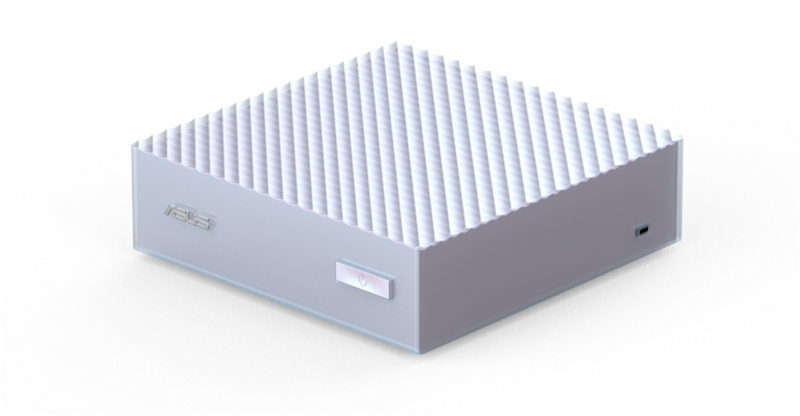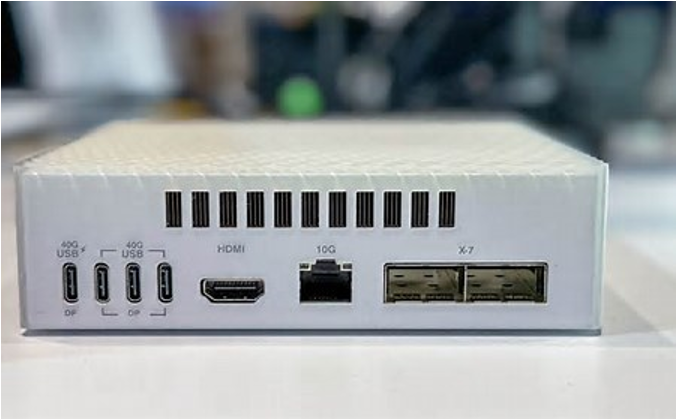Nvidia introduced the DGX Spark, a compact AI supercomputer powered by the GB10 Grace Blackwell Superchip, designed for AI model development and inference on desktops. It features 128GB of LPDDR5X unified memory, up to 4TB of NVMe SSD storage, and is priced at $3,999. Asus offers the Ascent GX10 as an alternative, also using the GB10 Superchip. It provides 128GB of unified memory, 1TB of storage, and a lighter chassis. It includes high-speed connectivity, such as a 10Gb Ethernet NIC and dual-port Nvidia ConnectX-7, and is priced at $2,999. Dell’s Pro Max with GB10 and HP’s ZGX Nano AI
Nvidia introduced its DGX Spark, a compact AI supercomputer, at GTC. It’s about the size of a Mac Mini and is powered by the GB10 Grace Blackwell Superchip. Initially known as Project Digits, this device is designed to support advanced AI model development and inference directly on desktops. While resembling a mini PC, Nvidia says it delivers significant processing power, enabling tasks like fine-tuning, inference, and prototyping without depending solely on external infrastructure.

Designed for developers, researchers, data scientists, and students handling complex AI models locally, the DGX Spark features 128GB of LPDDR5X unified memory and up to 4TB of NVMe SSD storage. Priced at $3,999, it is a significant investment, but for those
Asus has entered the compact AI supercomputer market with a similar system, the Ascent GX10, positioning itself as an alternative to Nvidia’s DGX Spark. Unveiled at Nvidia GTC 2025, this device targets developers, researchers, data scientists, and students seeking powerful local AI computing capabilities.
The Ascent GX10 is built around the GB10 Grace Blackwell Superchip, featuring 128GB of unified memory and a Blackwell GPU with fifth-generation Tensor cores and FP4 precision support, a 20-core Arm CPU, and NVLink. While comparable to Nvidia’s DGX Spark in many aspects, the Asus version differentiates itself through pricing and design choices.
Priced at $2,999, the Ascent GX10 is significantly more affordable than Nvidia’s $3,999 DGX Spark. Getting up to 1,000 AI TOPS processing (petaflop of FP4 AI precision using sparsity), it does compromise on storage, offering 1TB compared to Nvidia’s 4TB of NVMe SSD storage.
The Asus system features a lighter chassis constructed partially with plastic, which contrasts with Nvidia’s more metal-dense design. This approach potentially makes the Ascent GX10 more portable, which could be attractive for users who need to move their AI computing device frequently.

The rear of the system provides comprehensive connectivity options, including:
• An HDMI port
• Four USB4 40Gbps ports
• A 10GbE network interface card
• A dual-port Nvidia ConnectX-7 NIC, which alone can cost between $1,500 and $2,200
The Ascent GX10 represents Asus’ response to the growing demand for compact, powerful AI computing solutions. By offering similar capabilities to the Nvidia DGX Spark at a lower price point, Asus is positioning itself as an attractive option for organizations and individuals looking to develop and run AI models locally.
The inclusion of a high-end ConnectX-7 NIC at this price point adds significant value, potentially making the Ascent GX10 an appealing choice for those interested in AI clustering and distributed computing.
Dell’s Pro Max with GB10 and HP’s ZGX Nano AI Station are other alternatives to the DGX Spark, both utilizing the GB10 Grace Blackwell Superchip.
Available sometime in Q2, Asus says the final product may differ from the images shown above.
LIKE WHAT YOU’RE READING? INTRODUCE US TO YOUR FRIENDS AND COLLEAGUES.